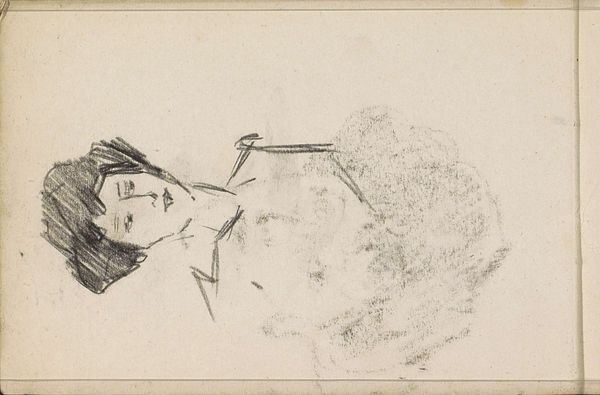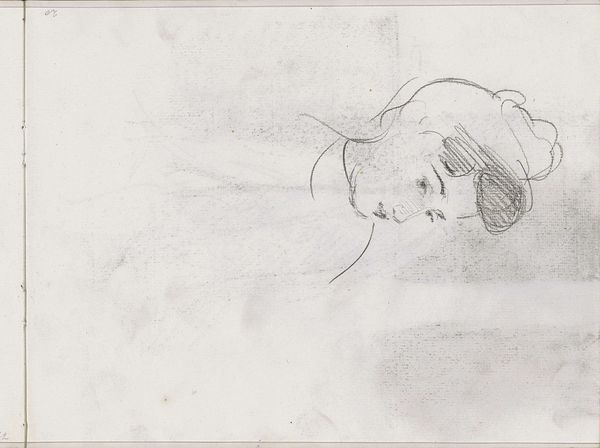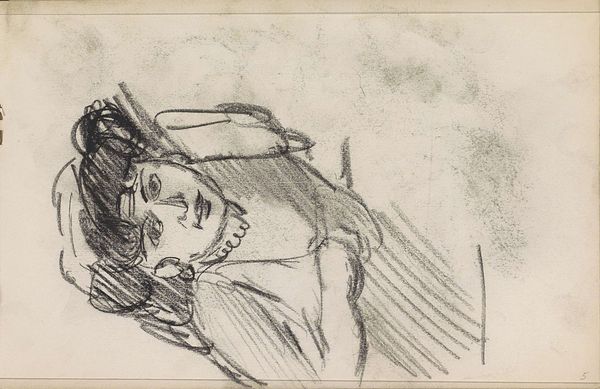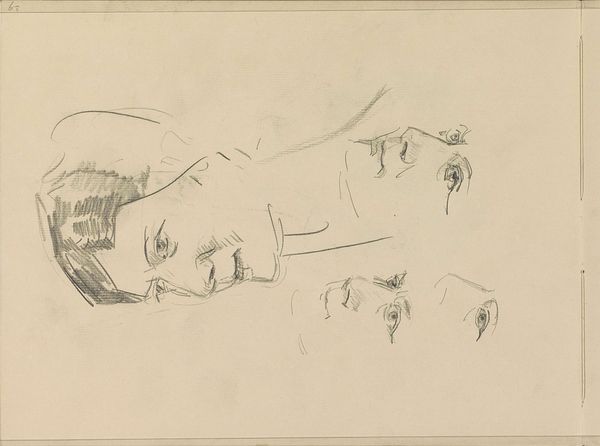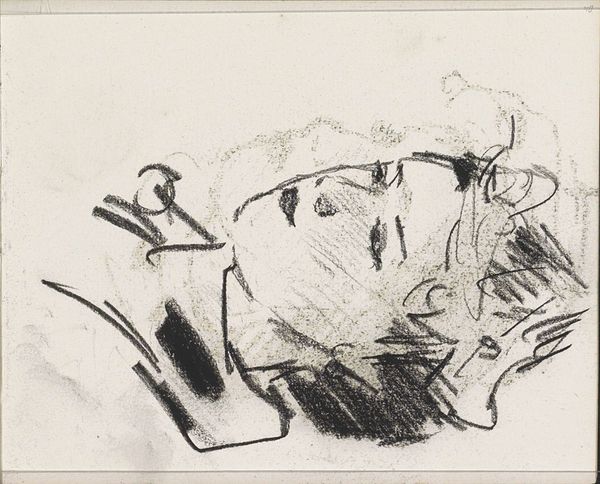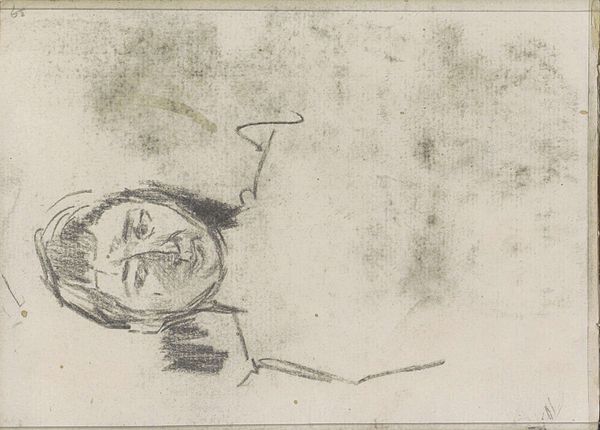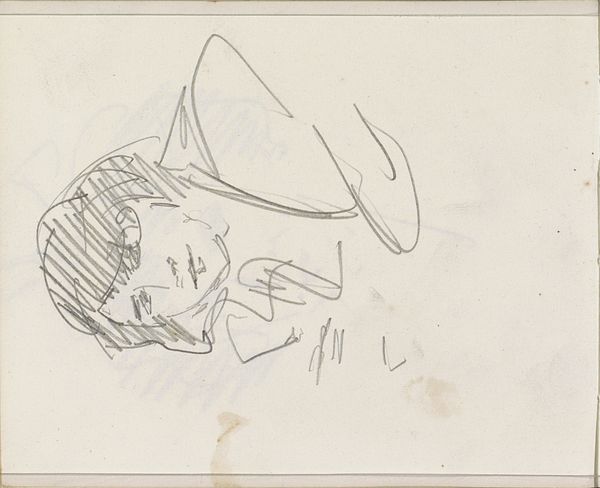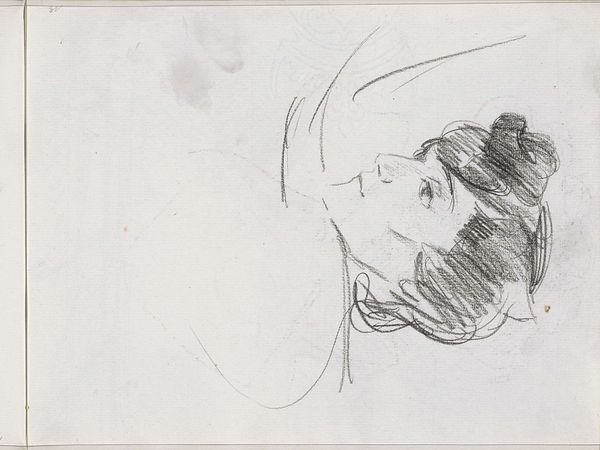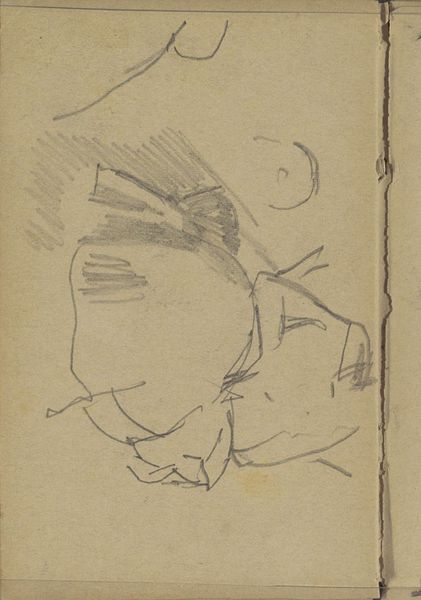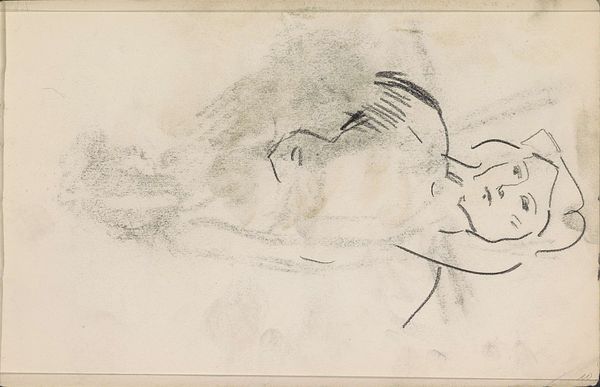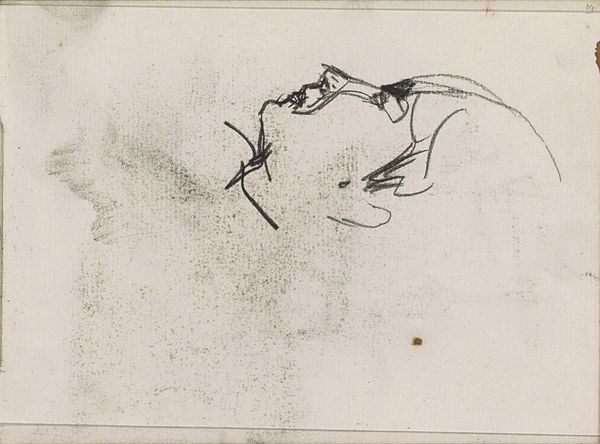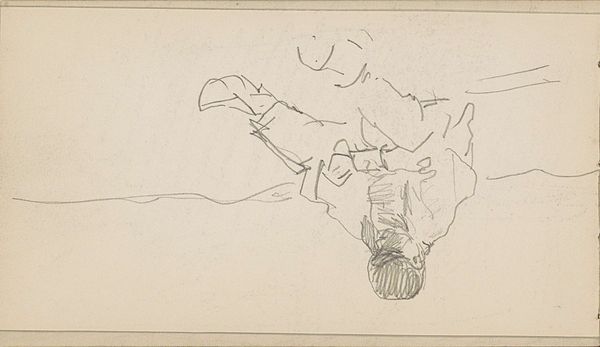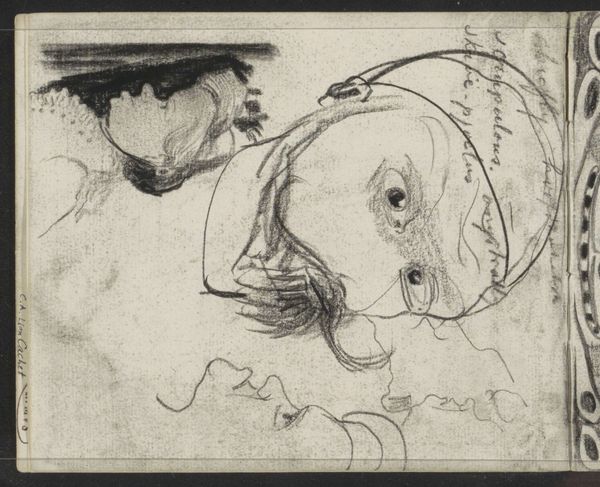
Copyright: Rijks Museum: Open Domain
Editor: This is "Vrouwenhoofd," or "Head of a Woman," a pencil drawing by Isaac Israels, created sometime between 1875 and 1934. It’s currently housed in the Rijksmuseum. The rapid, almost frantic strokes give it a sense of immediacy and yet, she feels distant. What do you see in this piece? Curator: I see a layering of gazes. Israels captures not just the woman's likeness, but a mood – an introspective state. It speaks volumes about the shifting social dynamics of the time. Consider the rapid marks and the unfinished quality of the sketch. Editor: I hadn't thought about the social context! What does the technique tell us? Curator: The impressionistic style – the quick, unblended strokes – this moves away from formal portraiture and is far more personal, exploring inner psychology as much as outward appearance. It reminds me of some quick anatomical sketches one might see, which have little or no shading, but rely solely on confident and perfectly placed marks. What symbolic elements can you discern? Does the absence of elaborate details, the stark simplicity, communicate anything further to you? Editor: It suggests a departure from traditional roles perhaps? Less adornment, more emphasis on the individual? Curator: Precisely. The lack of idealization speaks volumes. We are offered a glimpse into a real person, caught in a moment of contemplation. And this image can serve as a vessel, really. It represents all the unseen, quiet lives of the era’s modern woman. Editor: That's fascinating. I appreciate how you've connected the personal expression to a broader cultural shift. Curator: Art allows us to engage in a cross-generational, cross-cultural conversation, to see reflections of ourselves, our anxieties, and our hopes throughout history. It also makes the experience that much more impactful.
Comments
No comments
Be the first to comment and join the conversation on the ultimate creative platform.
